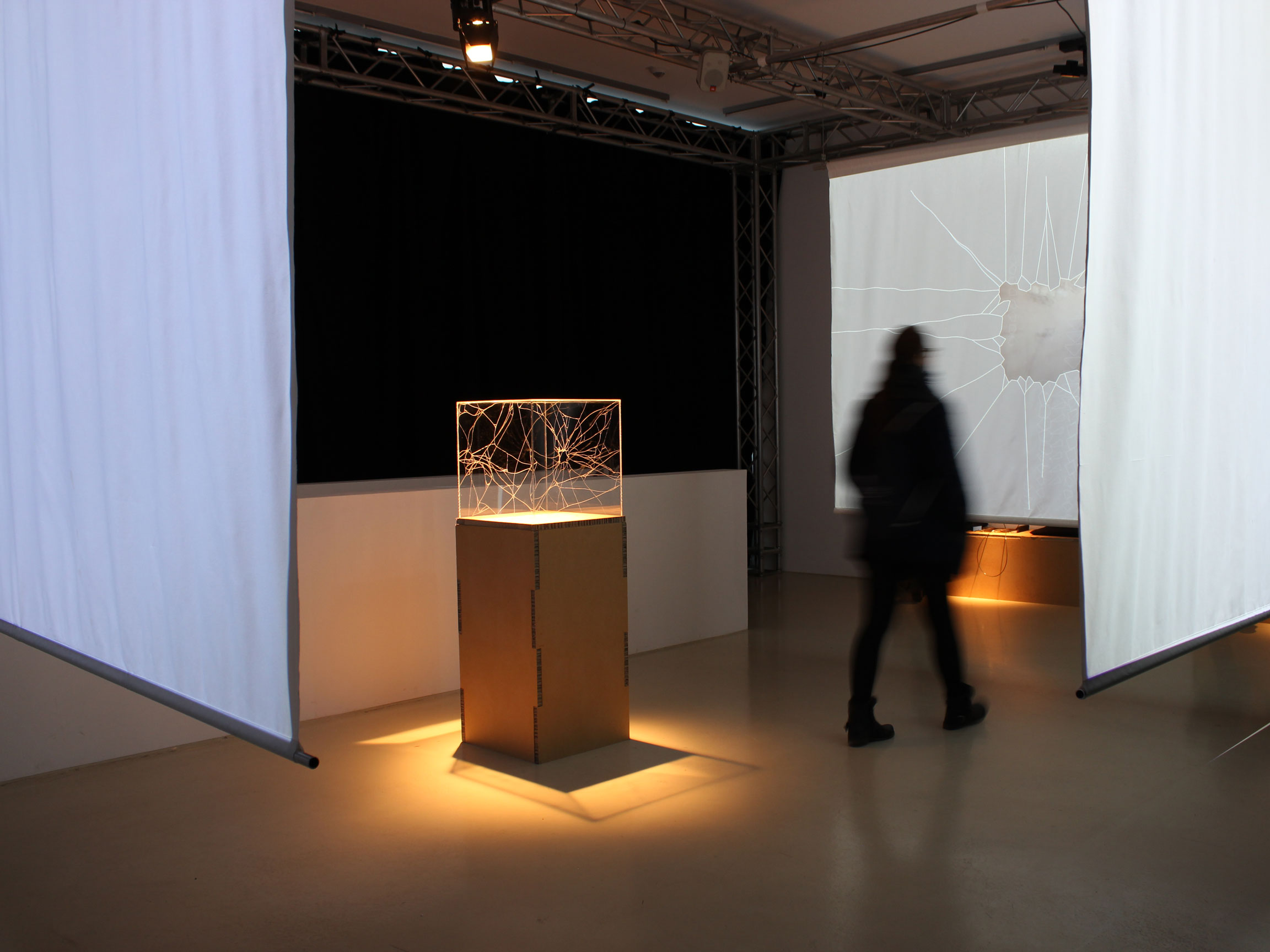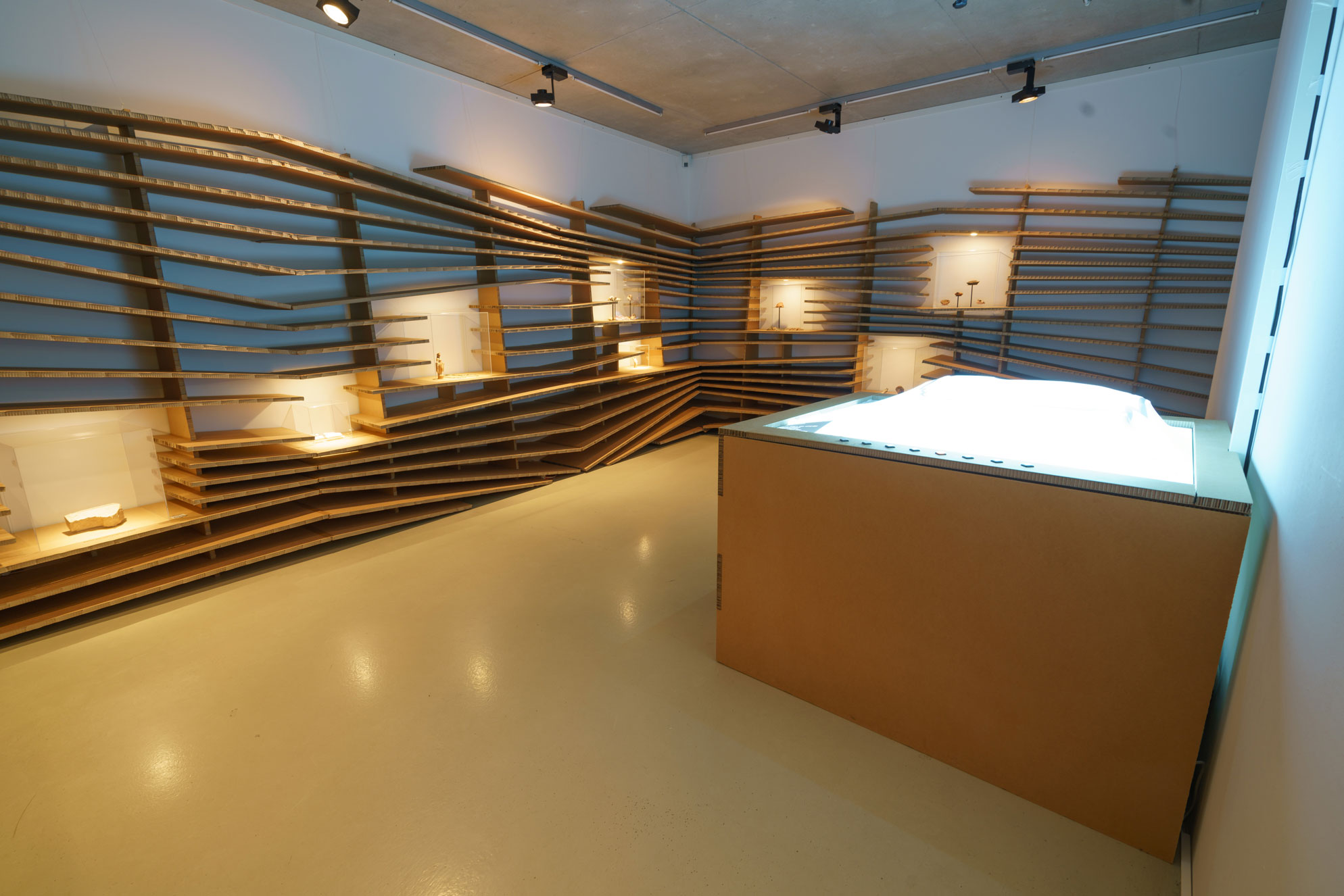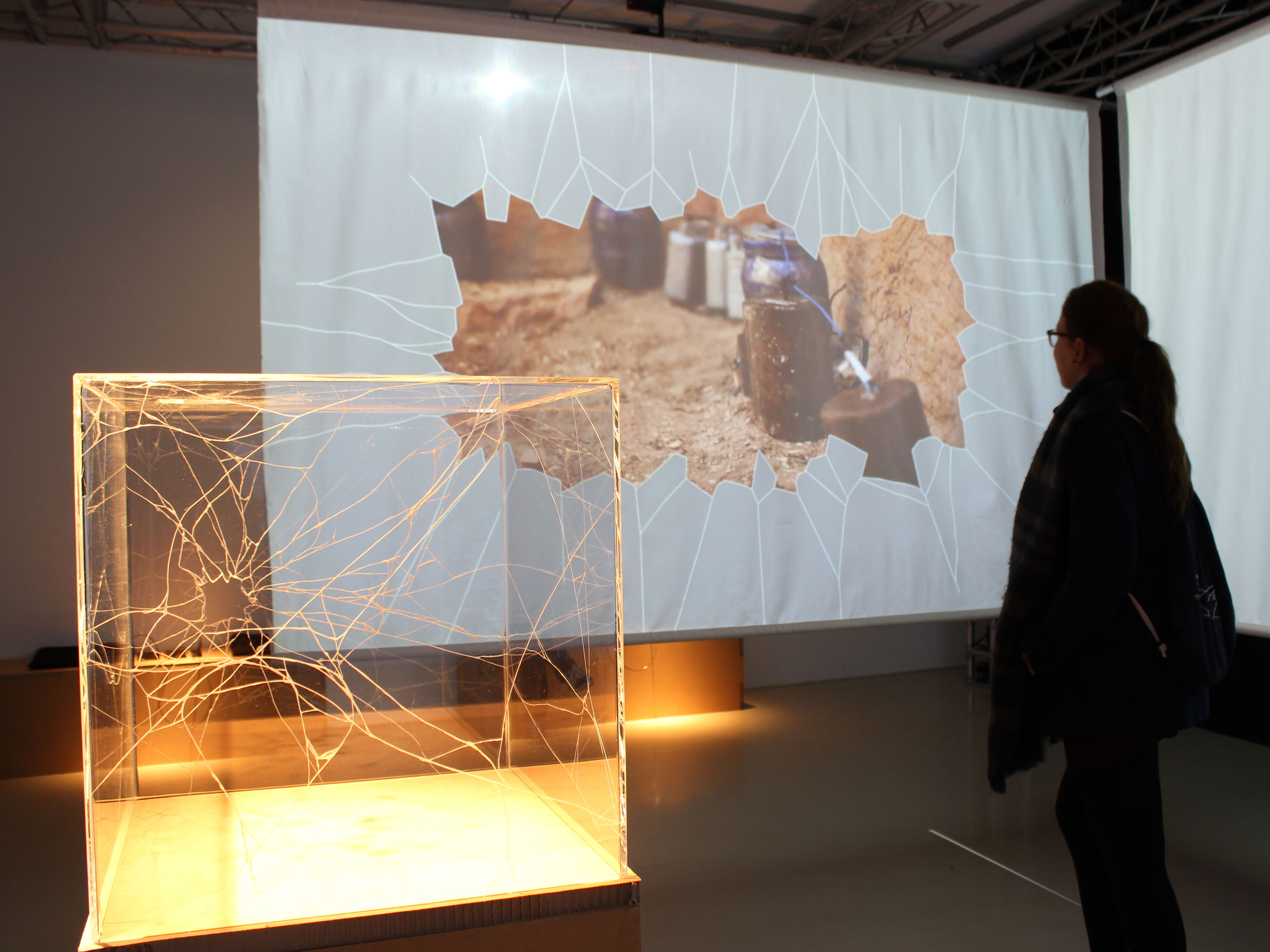Tell Genderes – 20 Meters of Human History
Duration
19 December 2015 – 31 January 2016
Location
Turm zur Katz, Konstanz
Participants
University of Konstanz, HTWG Konstanz
In “Tell Genderes – 20 Meters of Human History”, students present findings from archaeological excavations of the ancient settlement of Genderes, located in present-day northern Syria. The site has been studied in several excavation campaigns by archaeologists from Konstanz and Syria. Over thousands of years, the inhabitants left behind traces of their lives, gradually forming the mound layer by layer. In this way, Tell (Arabic for “mound”) Genderes continued to grow in height. Today, the mound embodies 20 meters of human history.
Room 1: Prolog
The prologue serves two purposes: since Tell Genderes is the first exhibition of the newly established specialization in Media Exhibition Design, the cooperation is introduced. At the same time, visitors receive a brief introduction to the exhibition’s theme. A wall map pinpoints the location of Genderes, while chests—like those used in excavations—display images of the site and the digs.
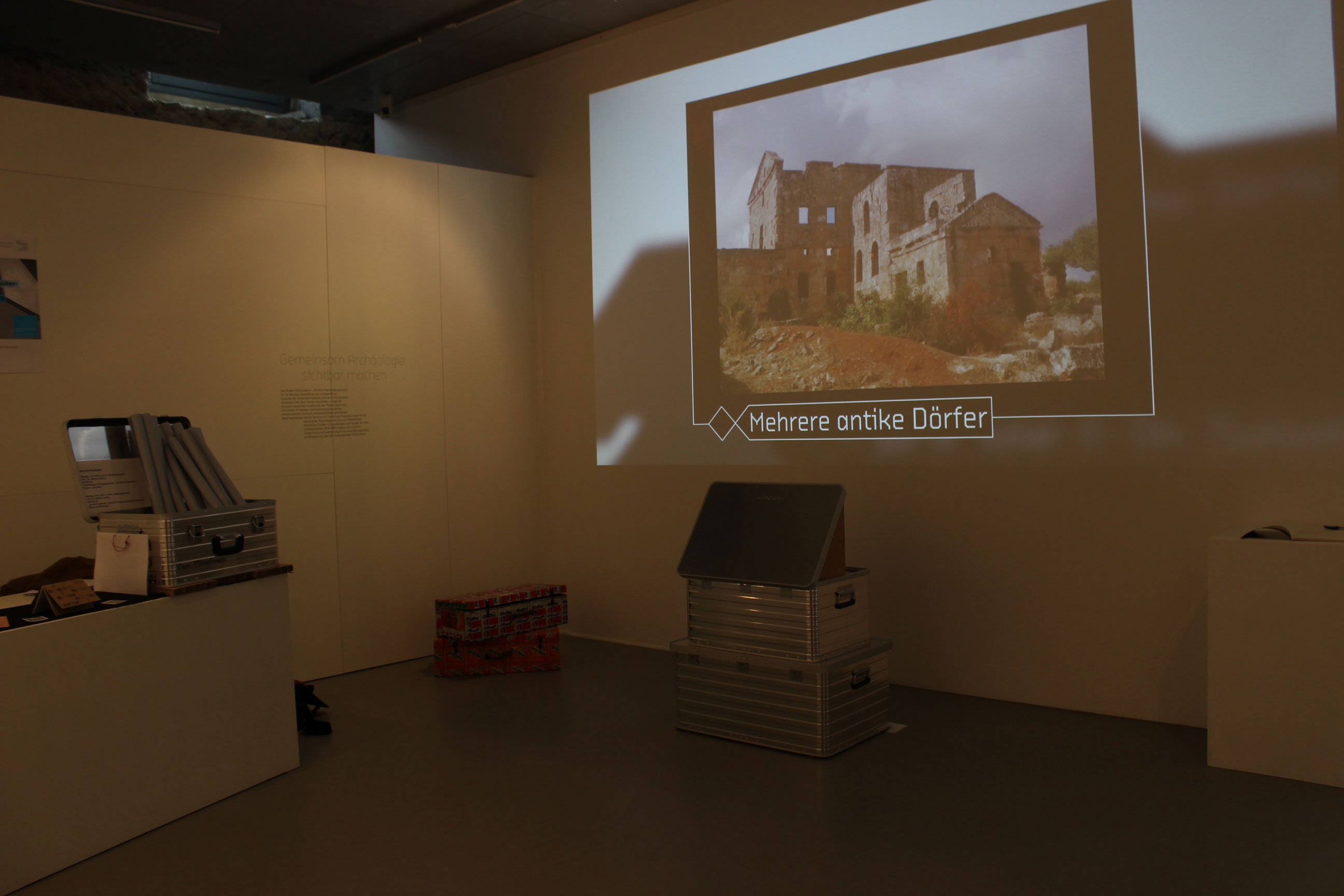
Room 2: A Tell Emerges
The exhibition presents perspectives of different actors, which also shifts the context of the objects on display. In Room 2, the perspective of the inhabitants is explored.
Here, the exhibits consist primarily of everyday objects such as jugs, presented without additional explanation. They are embedded in a sculptural cardboard wall structure that represents the interior of the tell. The height at which the objects are positioned offers clues about their age. A highlight of the room is an interactive media table that projects the development of the tell in three dimensions.
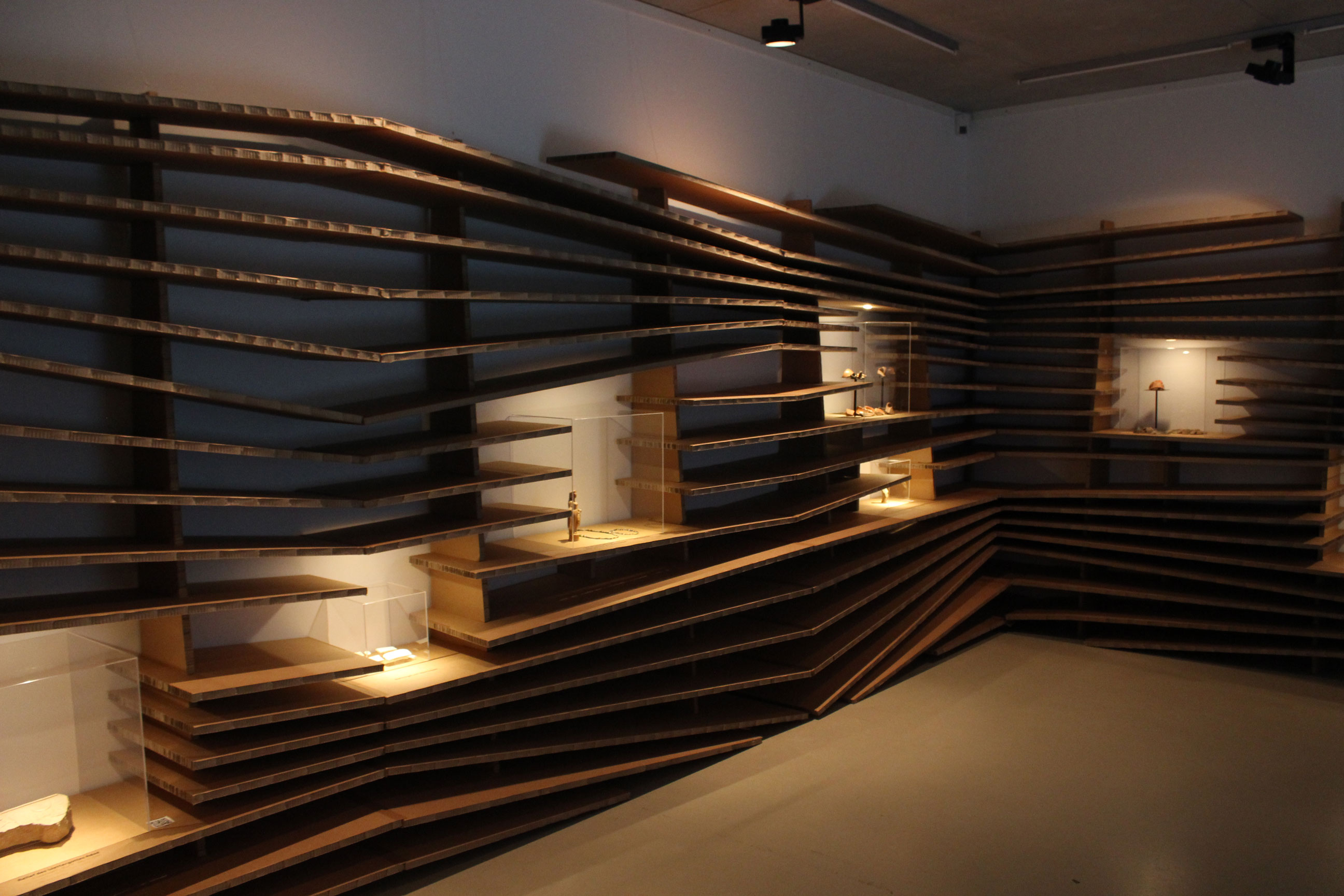
Room 3: Investigating a Tell
In the following room, visitors step into the perspective of the archaeologists. Objects from different epochs are presented alongside explanations of key figures of Genderes and the town’s history. At the same time, non-destructive methods of archaeological research—such as geomagnetics—are introduced.
Another interactive station features seemingly contextless shards of a Megarian cup. When visitors turn a wheel beneath the display, a projection of the complete vessel appears over the fragments, accompanied by an explanation of its original function.
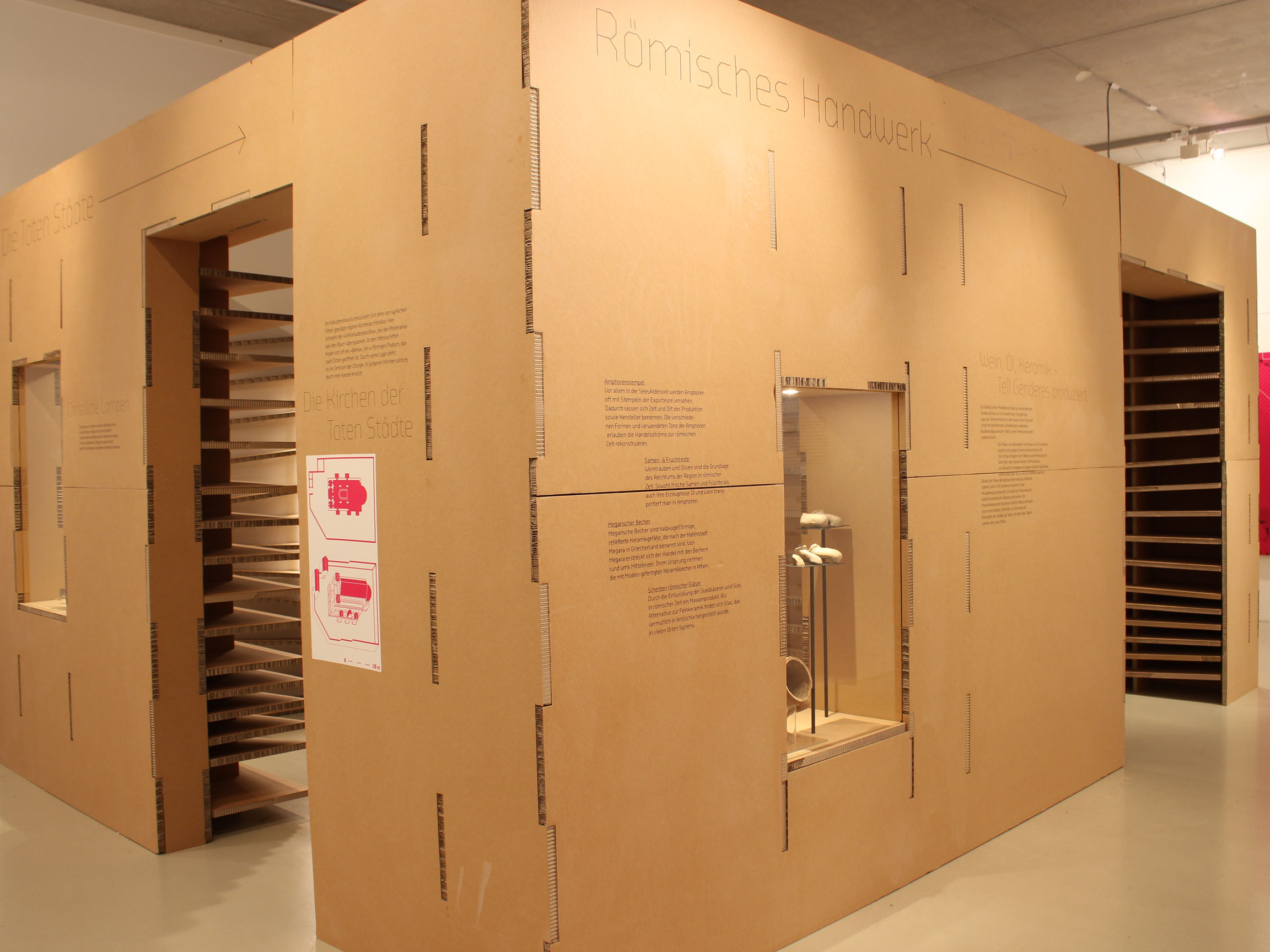
Room 4: Present
In the final room, current conflicts in the region and the resulting destruction of cultural artifacts are made tangible.
At the center of the large-scale installation stands a shattered display case—empty of any exhibit. Surrounding it, fabric panels hang from the ceiling, echoing the form of a showcase. Onto these surfaces, “virtual glass” is projected. As visitors approach, the glass begins to crack, until it finally shatters and reveals images and videos of cultural destruction.
The issues of looting and the trade in antiquities are also addressed at tablets, where visitors can watch interviews with various stakeholders.
